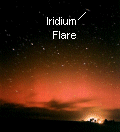|
Summary: An interplanetary
shock wave
buffeted Earth's magnetosphere on Monday, August 27th, at 19:52
UT (3:52 p.m. EDT). The
shock wave was the leading edge of a solar coronal mass
ejection
(CME) that left the Sun on Saturday, August 25th, when sunspot
group 9591 unleashed a powerful X5-class solar flare. The impact triggered modest auroras across Europe,
Canada and the northernmost United States.
Unless
otherwise stated, all images are copyrighted by the photographers.
|
|
Photographer, Location |
Images |
Comments |
 |
Jan
Lameer, the Netherlands
Aug 28. |
#1,
#2, more |
Photo #1
shows a meteor (magnitude -2) streaking against a backdrop of
colorful auroras. Click
here for movies. |
 |
John Russell,
Nome, Alaska
Aug 28. |
#1,
#2, #3,
#4, #5,
more |
J. Russell: "Although there wasn't quite
the activity we were hoping for, there was some nice substorming
activity, which continued into near daylight." Photo details:
Nikkor 35mm@f2, 13 and 15 seconds on Superia 800 film. |
 |
Marco Verstraaten,
St. Annaparochie,
Holland
Aug 28. |
#1,
#2 |
Photo #1
captured an Iridium satellite flare against a backdrop of red-hued
auroras. Photo details: Fuji 400 Superia film, 28 mm. f 2.8,
1-3 min exposures. |
 |
Jody
Majko, Winnipeg, Manitoba
Aug 28. |
#1 |
J. Majko: "I watched the aurora here in
Winnipeg for about an hour this morning at 1 AM CST. They were
such a bright green that stretched across the northern sky that
I was able to see them through all the light pollution in the
city." |
 |
Lyndon
Anderson, 15 miles north of Bismarck, North Dakota
Aug 27-28. |
#1,
#2, #3,
#4, #5,
more |
Photo details: Pentax ZX-M camera, 50 mm pentax
lens with 1.4 aperature, 10-30 second exposure times, Fuji Superia
800 film |
 |
Dominic
Cantin, Quebec, Canada
Aug 28. |
#1,
#2 |
D. Cantin: "This was not a big display ,
but there were a few good moments with rays up to 35° high."
Photo details: 28mm @ f2.8, 25 seconds, Kodak Supra 400 film. |
back
to spaceweather.com |





